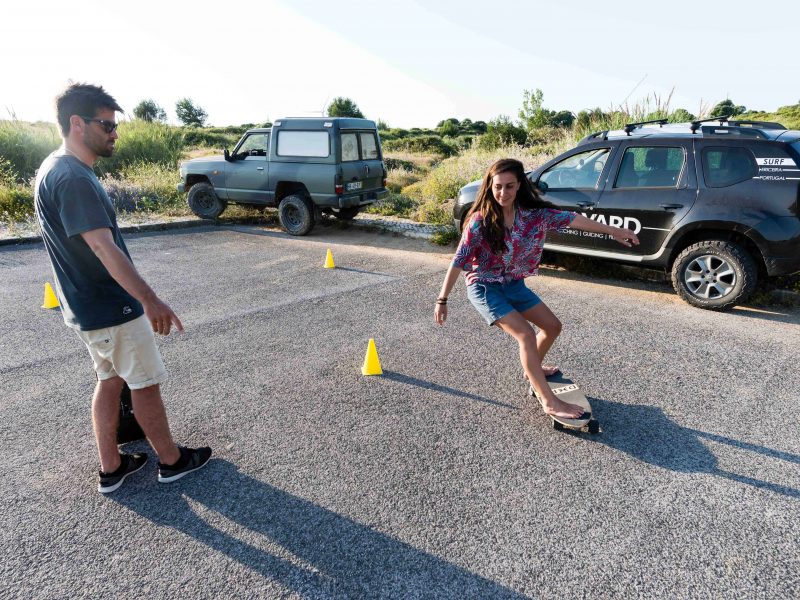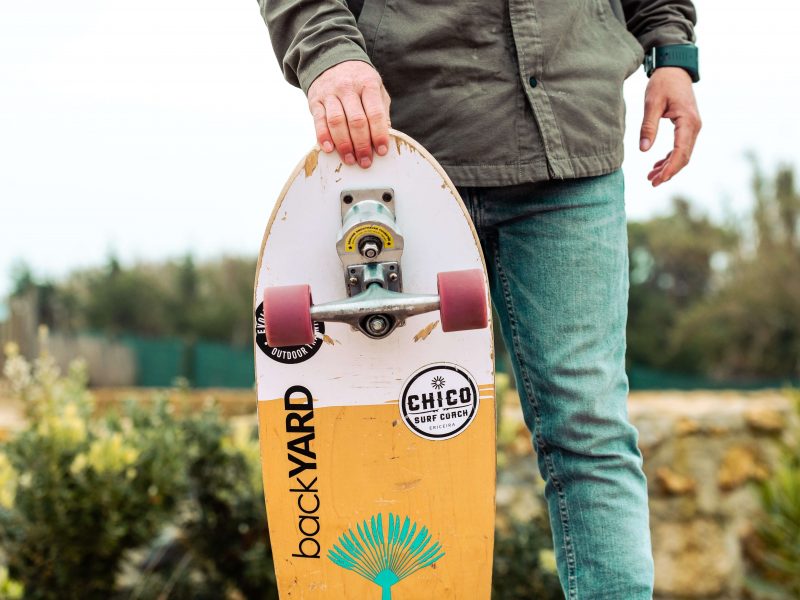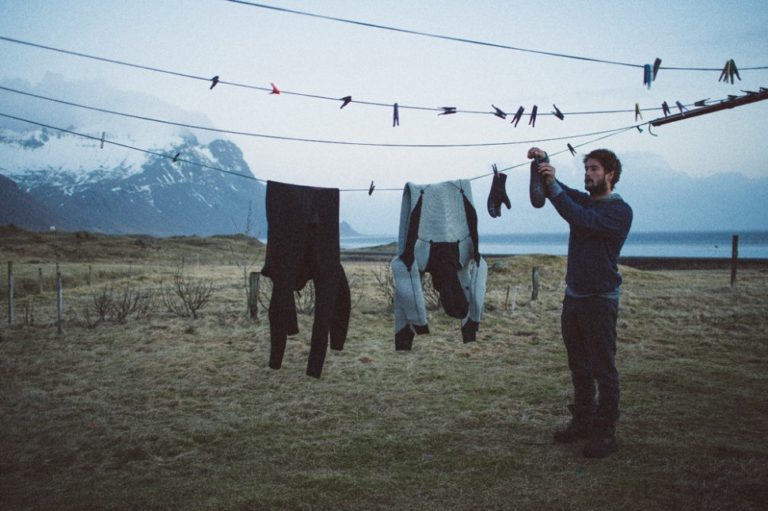
Surf skating can work wonders for your surf technique—it allows you to isolate and replicate movements repeatedly until they become automatic.
To master a skill, you must practice it many times, and this is not always easy with surfing. The ocean doesn’t give us much time to practice on top of the board, and since every wave is different, we also have to adapt our technique to each wave. Surf skating addresses two of these problems.
However, as important as practice time is, the quality of your practice is also crucial. Practicing with incorrect technique can lead to automating the wrong movements. We need to ensure that we’re reinforcing the correct movements.

There are at least two things that can lead to automating incorrect movements:
Turning over the front foot: Surf skates are designed in a way that makes it much easier to turn over the front foot. The front truck allows for easier leaning and turning. However, in surfing, we should turn by putting more pressure on back foot and not on front foot. A common mistake I see from surf skaters is turning over the front foot instead of the back foot. So, when you surf skate, ensure that you are leaning over the rails of the skate by applying pressure on your back foot heels or toes.
Skate too loose for the board you use: Having a looser surf skate setup makes it easier to turn and generate speed, but most people surf with boards that aren’t as responsive as a loose surf skate. I surf with a shortboard and prefer my surf skate to be very tight—this better replicates the board I surf with. If you get used to riding a very loose surf skate, you may be able to execute very fast and responsive turns that your surfboard won’t allow, causing you to lose balance. Make sure your surf skate is tight enough to simulate the feel of your actual surfboard.
Surf skating is an incredible tool to help improve your technique, balance, and coordination. However, you must ensure you practice correctly to avoid reinforcing incorrect movements.




